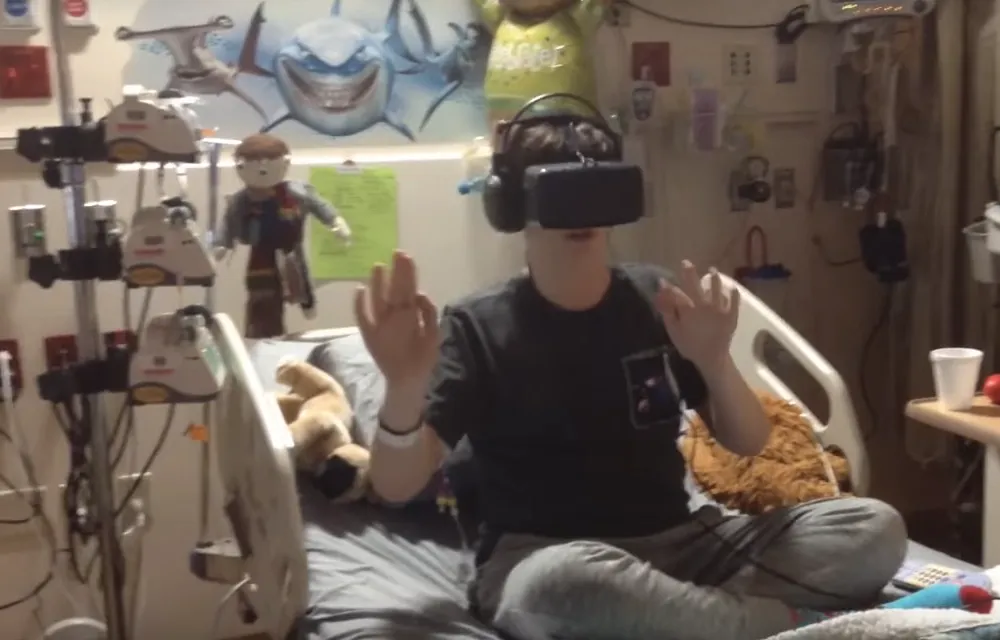One of the most heart-breaking things many people don’t think about is the isolation some sick children undergo while battling illnesses in the hospital. With immune systems incredibly susceptible, exposure to friends can become a danger some families can’t afford to risk. As a result, hospital rooms can become a lonely place for days, weeks, months or even years of a child’s life.
So keep that in mind while watching the kids at Michigan’s C.S. Mott Children’s Hospital try an Oculus Rift development kit. While the choice of experience is somewhat questionable (VR roller coasters tend to be among the more uncomfortable VR experiences), the people operating the demo were asking the kids if they were OK and wanted to stop, with a resounding “NO” from one of the children.
While I often think about the unknowns regarding the use of VR by children under the age of 13, especially for long periods of time, how do those unknowns weigh against the very real possibility that kids in hospitals can be brought out of isolation from their friends by being able to socialize in VR?
The Gear VR today is on the cusp of allowing people to watch Hollywood movies together with others spread across the world. So a parent with a child in the hospital could theoretically load up a fun kid-appropriate movie on the Gear VR and he or she could invite four or five friends to watch that movie with them in VR as if they had gone to their local theater together. Even if the child is in a hospital seeing a specialist on the other side of the country, he or she can still put on a headset at the same time as their friends elsewhere and have a night out at the movies chatting. There would be nobody else telling them to quiet down either.
Despite the unknowns of children and VR — with eyes and brains that are still developing — I know if I hadn’t seen a smile on my child’s face in months or years I wouldn’t be able to say no to that kind of an opportunity.






























